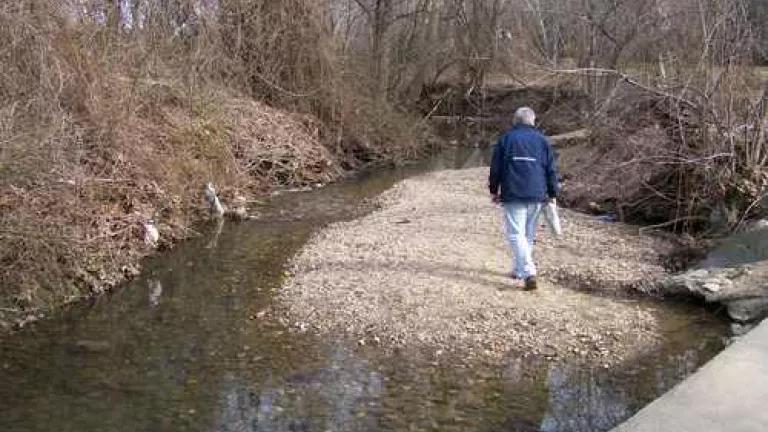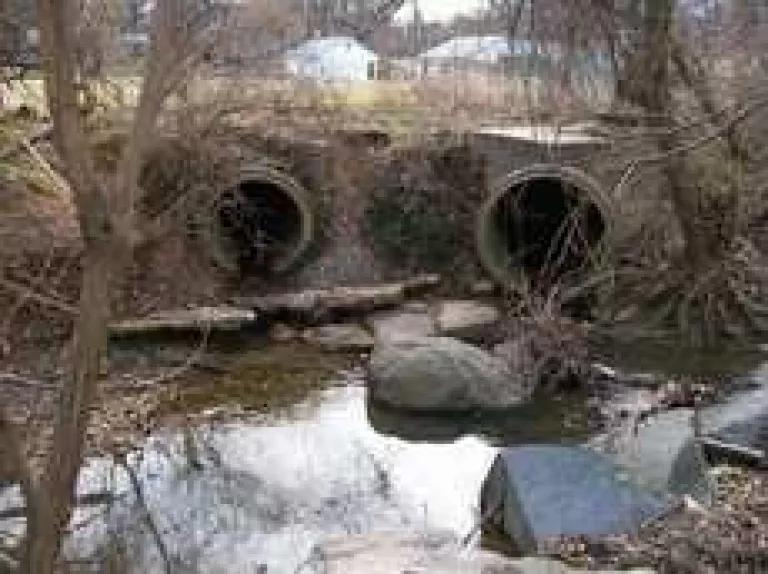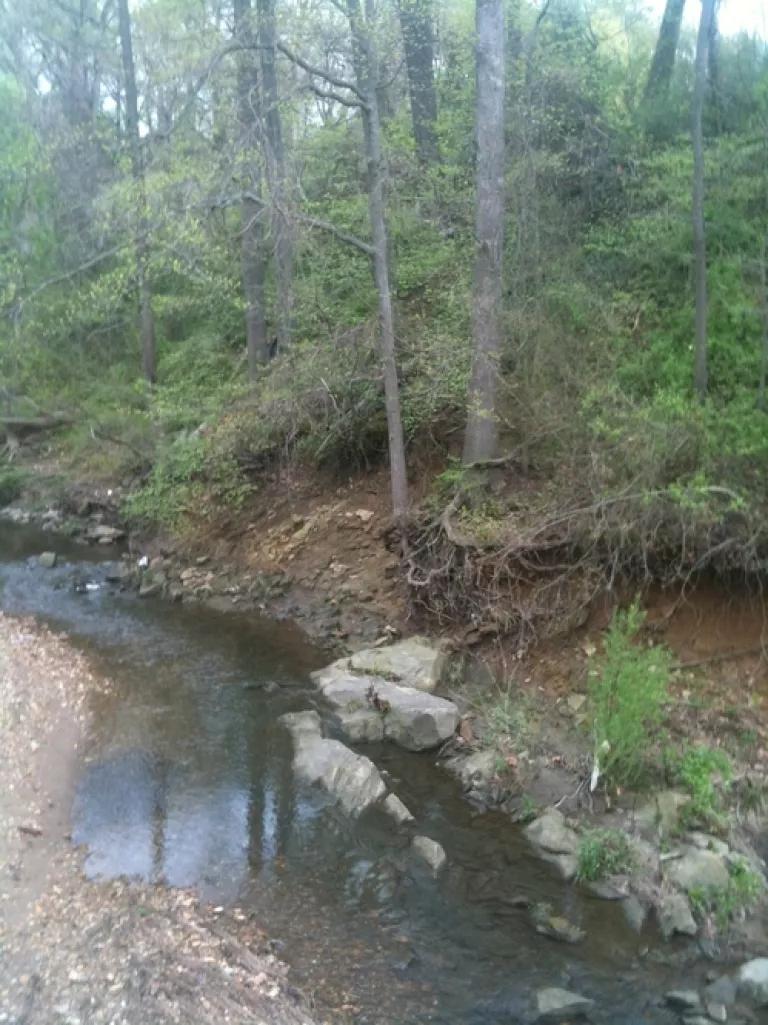
It's been a really wet spring here in the DC area. Actually, I don't know for sure whether it's wetter than usual, or whether I am just noticing the rain more because it has reliably fallen right before my scrappy team of 8-year-olds was scheduled to play baseball. In any event, I've turned my frustration with the rain into a multi-media overview of the problems that our current system of handling stormwater poses for local rivers and streams. Enjoy.
To begin, here's a picture of the stream in my neighborhood, Four Mile Run, on a normal (not wet) day.
And here is a video of what it looks like at the exact same location when we get a decent rainstorm. (Sorry for the video quality -- it was raining, I used a phone camera, and I was trying to keep the darn thing still while my dog pulled at her leash.)
The reason that the stream flows vary so dramatically is that the area around me, like many urban and suburban communities, has a lot of hard surfaces, like buildings, roads, parking lots and other areas. When it rains, the stormwater cannot soak into the ground because of these impervious surfaces, so that it flows into . . .


big concrete pipes, and then out into our rivers and streams.
Along the way, stormwater picks up whatever is on the hard surfaces, which can include dirt, oil and gas products, lawn chemicals, and more, which can cause significant contamination problems. In addition, the sheer volume of stormwater is a problem. When rain doesn't soak in as it naturally would, stormwater-filled streams get chugging along, as illustrated by the following videos of my local stream.
And, when streams get moving at this pace, with this amount of water, they can do real damage to the stream banks, eroding the sides of natural streams, which are important areas for critters and which help filter stuff from getting into the streams. Have a look at the picture below, which shows how a tree has had the land scoured out from under it by Four Mile Run.

This erosion also churns up loads of sediment, which is not just gross looking, but which has serious consequences for waterways. For instance, the Environmental Protection Agency has developed a major pollution cleanup plan for the Chesapeake Bay, and sediment is one of the key pollutants targeted. As the agency notes,
Too much sediment in the water is a major problem impairing the Chesapeake Bay. Excess floating clay and silt particles cause clouding of the water, and blocking sunlight from reaching underwater grasses. These underwater grasses can't grow without sunlight, and die, harming young fish, blue crabs and other aquatic life needing bay grasses for shelter to survive. Underwater grasses are also a critical food source for many of the Bay's key waterfowl species.
Around the region, stormwater overloads numerous small tributaries to the Potomac River, and the resulting sediment makes the Potomac the color of milky coffee, as shown in the video below, taken yesterday (after a weekend with lots of rain).
But fortunately, there are solutions to polluted runoff. Communities around the country are increasingly investing in a suite of strategies known as "green infrastructure," which involves a variety of ways of using vegetation and soils to absorb and clean stormwater. These practices include green roofs, street-side vegetated strips and swales, rain gardens, and more. Using these techniques to infiltrate or use rainwater where it falls means less runoff pollution, and fewer stormwater problems, like those I see along Four Mile Run, or like those that plague streams, lakes, and beaches around the country. The video below discusses some of these solutions, with a particular focus on how they can help improve beach water quality.
There's reason to be hopeful that green infrastructure-based development plans will be coming soon to communities around the U.S. Right now, EPA is in the process of developing nationwide requirements aimed at addressing significant sources of runoff pollution, and the agency's own work on green infrastructure demonstrates that it knows how effective these techniques are at reducing harms from stormwater and providing multiple additional benefits. Stay tuned to Switchboard for future updates about this critical rule and how you might be able to participate in the future.
Runoff pollution controls can't come fast enough for me. I'm anxious for the day when these techniques are used broadly in my area, so that Four Mile Run can function more as a natural stream, and less as a source of pollution. In the meantime, I'm dreading the next rain (expected tonight), both because of the problems polluted runoff will cause, and because my boys really need to get the heck out of the house and play some baseball.
